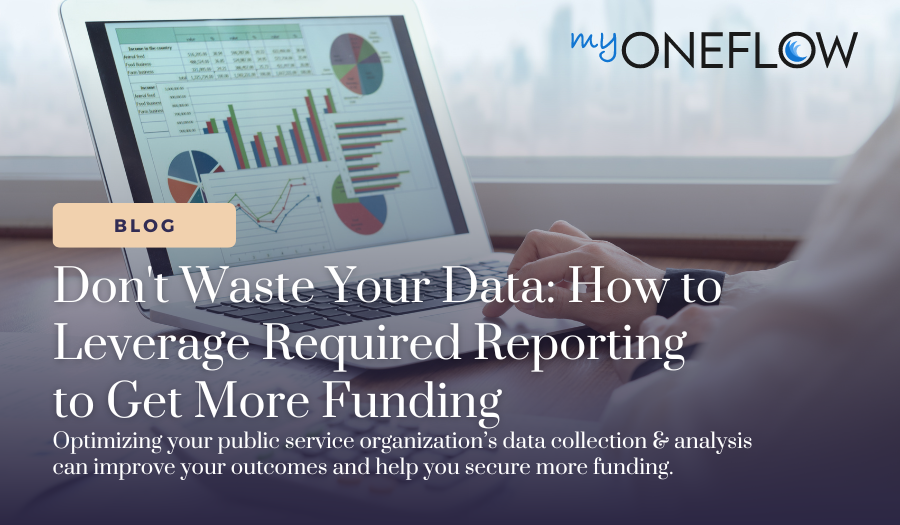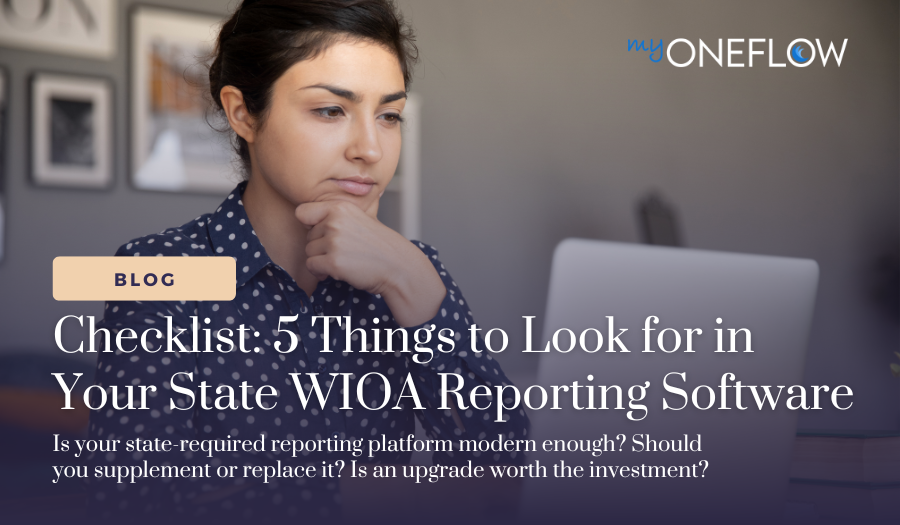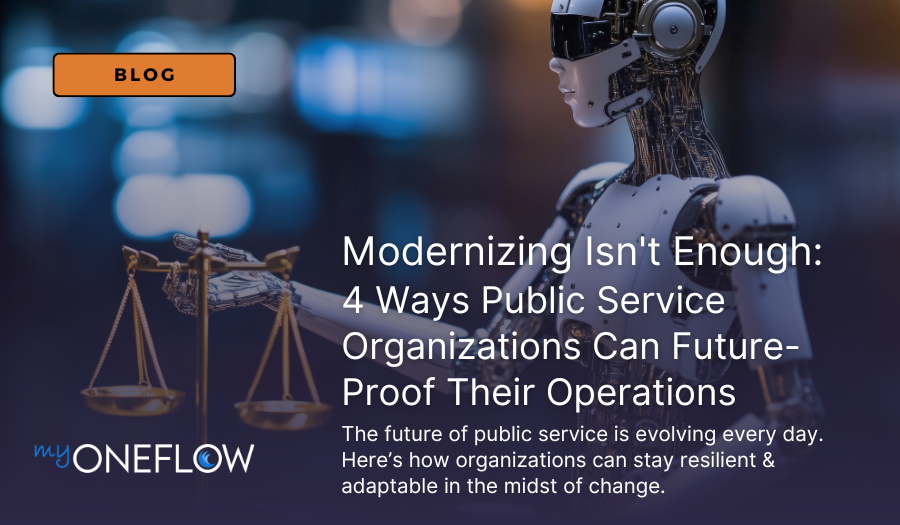Checklist: 5 Things to Look for in Your State WIOA Reporting Software
Data reporting and compliance have become increasingly complex for public service programs relying on multiple funding streams. Many organizations...
4 min read
myOneFlow Staff Jul 30, 2024 1:29:46 PM

Whether for state reporting or meeting grant compliance, public social service organizations are all too familiar with required data collection. However, compliance reporting is more than just a necessity; it can be leveraged as a strategic tool that can unlock significant funding and boost community impact. Public agencies compile extensive data for annual reports but often miss the opportunity to leverage this information for more substantial benefits. In this blog, we'll explore how organizations can expand their current data collection processes to get the most from their data. We'll cover the importance of meticulous data collection, strategies to leverage data for increased funding, and the benefits of real-time data utilization to enhance service delivery and community impact.
Failing to track the full breadth and depth of your services can have significant consequences for your organization. Some potential outcomes include:
Missed Funding Opportunities:
Underrepresentation of Efforts:
Capturing comprehensive service data is crucial for showcasing the full extent of your organization's efforts. This extends beyond basic compliance requirements and paints a complete picture of your program's effectiveness. By documenting every aspect of your services, you can highlight both the breadth and depth of your impact, making it easier to secure additional funding. When auditing your processes, check that you're tracking the following data points:
Breadth of Services:
Depth of Impact:
By meticulously collecting and analyzing data, you can present a compelling case for additional funding and support. Detailed, accurate reporting meets compliance requirements and illustrates the value your organization brings to the community. It enables you to showcase the full range of your services and their profound impact, thereby securing the financial and organizational support needed to continue and expand your valuable work.
While necessary for compliance, annual data reporting often lacks the immediacy and actionable insights needed to improve service delivery. This traditional approach yields outdated information that fails to reflect the current needs and circumstances of your clients and citizens. By contrast, real-time data analysis offers a dynamic and up-to-date perspective, allowing organizations to make informed decisions quickly. Here are a few benefits that organizations can experience from leveraging real-time data access:
Informed Decision-Making:
Identifying Bottlenecks and Process Improvements:
Transitioning from annual reporting to real-time data analysis involves strategic planning and adopting appropriate tools and technologies. Here are practical steps to facilitate this shift:
Transition Steps:
Tools and Technologies:
By adopting real-time data strategies, organizations can significantly enhance their responsiveness, efficiency, and overall impact. This proactive approach improves client outcomes and positions your organization as a forward-thinking leader in public service delivery, ultimately helping secure additional funding and support.
Effective data utilization is the cornerstone of modern service delivery, offering long-term benefits beyond compliance. By embracing robust data collection strategies, program directors can prepare their organizations for future funding landscapes and evolving regulatory requirements. Investing in advanced data tools and real-time analysis enhances operational efficiency and amplifies the positive impact on the communities served.
As the public sector continues to navigate complex challenges, the ability to harness and leverage data will be a defining factor in achieving sustained success. Accurate, comprehensive, and timely data empowers organizations to demonstrate their value, secure necessary funding, and drive meaningful change. myOneFlow is a comprehensive case management and reporting platform designed to meet the needs of public service providers. From small career centers to state-level departments, myOneFlow helps public service organizations prioritize data management as a strategic asset, ensuring their organizations are well-equipped to meet current needs and future demands. Contact our team today or check out our package offerings to learn more.

Data reporting and compliance have become increasingly complex for public service programs relying on multiple funding streams. Many organizations...

Public service providers are navigating a turbulent environment shaped by shifting political priorities and funding directives. The current...

Grant-funded public service organizations face the unique requirement of tracking both fiscal details and case management for their participants....